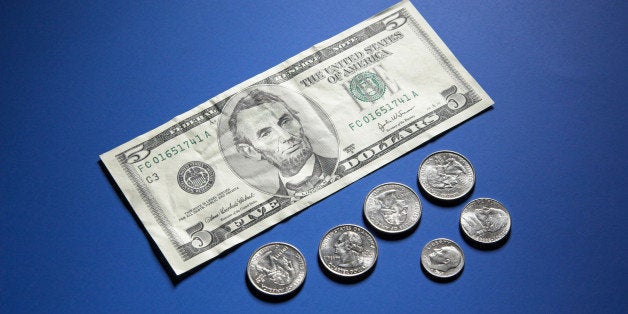
In 1987, I was a newly minted Ph.D. economist when I was asked by a group of community organizations in Los Angeles to analyze a proposal to increase California's minimum wage above the federal level. I reviewed the existing research and then testified to the state's Commission for Economic Development that the proposed wage increase would likely improve worker outcomes and have little to no impact on employment levels.
The business response was predictably negative, with some suggesting that the proposal was a jobs-killer that would put California at a "disadvantage." My analysis suggested it wasn't: higher wages would prompt more consumer demand and higher costs would be partly offset by improvements in morale, absenteeism, and productivity.
The state's Industrial Welfare Commission, the group that then had authority over these matters, eventually decided to increase the minimum wage by nearly 27 percent. While I like to think my intervention helped, what really moved the day was creative organizing that both mobilized low-wage workers and targeted those sectors of business that were likely to benefit. Still, I found myself waiting nervously for the results to come in - would the wage hike really help? Would the predicted job losses really materialize?
Part of the effect was immediate: nearly $2 billion in income was immediately transferred to those previously working below the new minimum. As for jobs, the conclusive answer came in a 1992 analysis by David Card, a UC Berkeley economist who was soon awarded the prestigious John Bates Clark Prize for his significant contributions to economic thinking: the effects on employment were indeed nil, including on the retail industry many thought might be most vulnerable.
As Yankees manager Yogi Berra once famously said, "It's like déjà vu all over again."
This time, it's Los Angeles Mayor Eric Garcetti proposing to hike his city's minimum wage to $13.25 over the course of three years, with a subsequent peg to inflation. This would make L.A. the largest municipality to join the wave of local efforts to elevate minimum wages in the face of inaction at the federal level. And the specter of massive economic collapse is, I'm sure, soon to be floated into the debate.
So what is the real likely outcome? Once again, UC Berkeley is in the mix with economist Michael Reich - who has become one of the country's leading researchers on the impacts of local minimum wage hikes - leading a team study which this time tries to look prospectively at the impacts.
The results suggest that the benefits could be substantial. The hike, as it turn out, could affect more than a third of the labor force, primarily because Los Angeles has so many low-wage workers and because increases at the bottom have a "ripple effect" upward that impacts those higher up in the wage distribution. After full implementation, the gains would be on the order of more than $3,000 a year per worker, with a significant share of benefits accruing to people of color and the working poor.
On the employment side, the predictions are somewhat mixed but close to zero - the team is suggesting that there may be a very small dampening impact on restaurant employment but express more concerns about some low-wage manufacturing (such as apparel) which might find it easier to shift production lines.
Why the muted effects on employment? Interestingly, what used to be a staple of traditional economics - that minimum wage hikes trigger job cutbacks - has found increasingly less evidence in the field. Part of the reason is simply that there are bigger and more important determinants of employment levels. But another reason is exactly the sort of offsetting effects on worker spending and labor productivity mentioned above.
What about the size of the increase? As it turns out, the Mayor's proposal is below the number agreed to in, for example, Seattle, and the rate of increase is more or less in the middle of a series of recent local minimum wages hikes in other large cities. Moreover, the final level of $13.25 in 2017 is, after adjusting for inflation in the Los Angeles metropolitan area over the last four decades, less than a dollar above the peak levels of the real minimum wage in 1968 and 1975.
In short, the Mayor's number is really returning us to a time when the economy, by all accounts, was doing well - and surely strong worker wages, spending, and productivity had something to do with that.
There are reasons to think further about the details of Garcetti's proposal. Some labor advocates would like to see a higher ending wage, more on the order of $15 (as in Seattle). Some business voices worry about leakage of business activities to one of the nearly ninety other municipalities that make up Los Angeles County. And everyone should be concerned about the actual enforcement of the law, particularly given the prevalence of wage theft in the current economy.
This argues for a healthy debate about the level and pace of increase, an attempt to coordinate with at least the other larger cities in Southern California, and a commitment to developing the sort of regulatory mechanisms that can make sure that workers benefit and good businesses are rewarded for obeying the law.
But just as in 1987 when those opposed to progress suggested that an extra 90 cents an hour was likely to shipwreck the California economy, it might be good for the rest of us to take a breath, consider the research and the record, and have a more productive conversation about the best ways to address inequality and make sure that work does indeed pay.